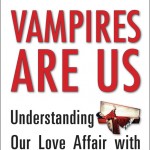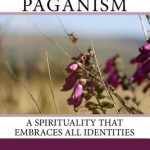[This is a partial response to our March series, “As Pagans, what do we hope to build?” It’s an edited version of an essay that appeared in the Patheos Press collection The Future of Religion in 2012, and it contains part of my answer to this question — but stay tuned for Part Two! –CHK]
Pagans are facing a series of issues that challenge American Paganism’s most immediate origins in the individualistic, grassroots counterculture of the 1960s. We often resist the institutionalization of our religions for the same reasons that many of us left mainstream churches and synagogues: we fear that the intensity of our spirituality and its sense of authenticity will be lost, that our practice will become stagnant and rote. Today’s Pagans are mostly solitary practitioners with loose or occasional affiliations with groups (79% identify as solitaries, according to sociologist Helen Berger). Many are hungry for more substantial experience and training than can be had from books and the internet. Additionally, Pagan families often long for stable religious communities in which to raise children, celebrate marriages, and mourn their dead. Yet the movement’s intense focus on personal spirituality looks superficially incompatible with sustainable institutions.
The challenge of contemporary Paganism’s future is to maintain an apparent paradox: to meet the needs of a growing movement without losing the passion and alternative vision that drew so many converts to Pagan traditions.
Individuality vs. Community
Pagans today most commonly gather in small groups with fluid membership and for large festivals that last for several days. Some Pagan nonprofits have successfully purchased land on which to hold gatherings, and urban groups have also attempted to start Pagan community centers, although many of these efforts have been hobbled by a weak economy and by a lack of clarity around their mission. Community centers usually attempt to provide ritual and classroom space for local Pagan groups, as well as space for social events, but the need for such spaces has often not been strong enough to make the centers financially sustainable.
Pagans of the future will need to develop institutions that do more than welcome diversity—they will need to harness diversity into collective work that meaningfully binds individuals into community. Since Pagans’ practices are so diverse, they often can only gather into large groups for worship by creating ritual that is relatively generic. Worship cannot be at the heart of a Pagan community center the way it is at a church. The shared work of Pagan institutions must concretely benefit Pagans from a variety of traditions, whether that means focusing on social justice projects such as hunger or homelessness; building Pagan-owned businesses on a cooperative model; providing networking or shared space for Pagan-specific goods and services; or creating Pagan homeschooling collectives. Pagans will financially support Pagan institutions only when those institutions allow individuals to express their religious values in more areas of their lives.
Professionalism vs. Egalitarianism
British Wicca came to America in the hands of individuals and small covens in which there was no laity—all were initiated as priests or priestesses. Mixed with American egalitarianism, this led to an eclectic American Wicca in which nonhierarchy was a common practice. In subsequent decades, many other Pagan traditions have continued to embrace this ideal. As the Pagan movement has grown, however, Paganism’s lack of professional clergy has become a stumbling block. Pagans often have difficulty finding Pagan clergy who have the professional skills to help them with difficult life transitions (for example, licensed counselors, hospital and prison chaplains, etc.). Pagan leaders are usually volunteers with families and day jobs. The hard work of facilitating a group, planning large events, and building and maintaining nonprofits often leads to volunteer burnout. Volunteers also often lack formal training in ministry, nonprofit administration, or counseling and are not always well-prepared for the stresses and challenges of leadership.
Pagans, however, are resistant to the idea of paid, professional clergy, as they fear that paid clergy will form an elite class that takes decision-making power and opportunities for creativity away from volunteers. Pagans must balance the need for professional Pagan services with the desire to continue to actively empower volunteers as leaders in the community. Nonhierarchical religious groups such as the Society of Friends (the Quakers) may help to provide models of how individuals with various levels of training might still function in a community as peers with differing roles.
Intimacy vs. Inclusivity
The contemporary Paganism of the 1960s and 1970s—strongly influenced by British Wicca—focused on emotionally intimate small groups. Some of these were oathbound covens who kept the details of their rituals a secret; others were empowerment groups (often for women, gay men, or lesbians) where personal sharing and confidentiality were paramount. Feeling that secrecy is no longer necessary for protection, Pagans now often enter the movement through large public workshops, book groups, and distance learning. While there are legitimate concerns about how secrecy can create an unhealthy power dynamic in small groups, young Pagans are often unaware that the practice of confidentiality is also a powerful group bonding tool. Pagans who see their religion as having a mission to change the world, especially in the realms of ecological issues and human rights, tend to be radically inclusive and sometimes demand that other Pagans be as well. Pagans who have experienced the support of a closely bonded small group, however, sometimes resist such inclusivity because for them, intimacy and trust are necessary precursors for deep spiritual experience.
Clashes between these two value systems have sometimes led to extended conflicts between groups and individuals who are otherwise fairly like-minded. Take, for example, an incident at the 2011 conference PantheaCon where transgendered women were turned away (perhaps inadvertently) from a Dianic women-only ritual. The incident has sparked an enormous amount of emotionally charged writing on the right of groups to hold exclusive rituals in public spaces, the social impact of exclusive rituals on Pagan community, and the legitimacy of gender-essentialist theologies. Some Dianics have charged that transwomen make a space “unsafe” for women who have been traumatized by men and have asserted their right to a particular kind of gender-exclusive intimacy, even at a large conference event. Queer and transgender activists have answered that such events splinter Pagan community and should at minimum be private events. Others, in turn, have questioned the moral rightness of having exclusive groups or confidentiality at all. Traditions that retain oathbound lore or have idiosyncratic rules for membership have sometimes felt assaulted by would-be students who feel entitled to entry. Pagans have a great deal of work to do in order to preserve the powerfully transformative effect of the intimate group, while also creating a wider Pagan movement that can protect their civil liberties as members of minority religions.
Conclusion
Pagans frequently fear institutionalization because we do not want our religions to compromise their values. The movement, however, has grown too large; institutions will inevitably form in response to needs. In order for those institutions to reflect non-mainstream values, however, they must be structured in non-mainstream ways. Pagans will not thrive in the structure of traditional churches; we must build something new. The struggle to creatively embed paradoxical values—individuality and community, professionalism and egalitarianism, intimacy and inclusivity—into institutions is the primary Pagan challenge for the new century.












